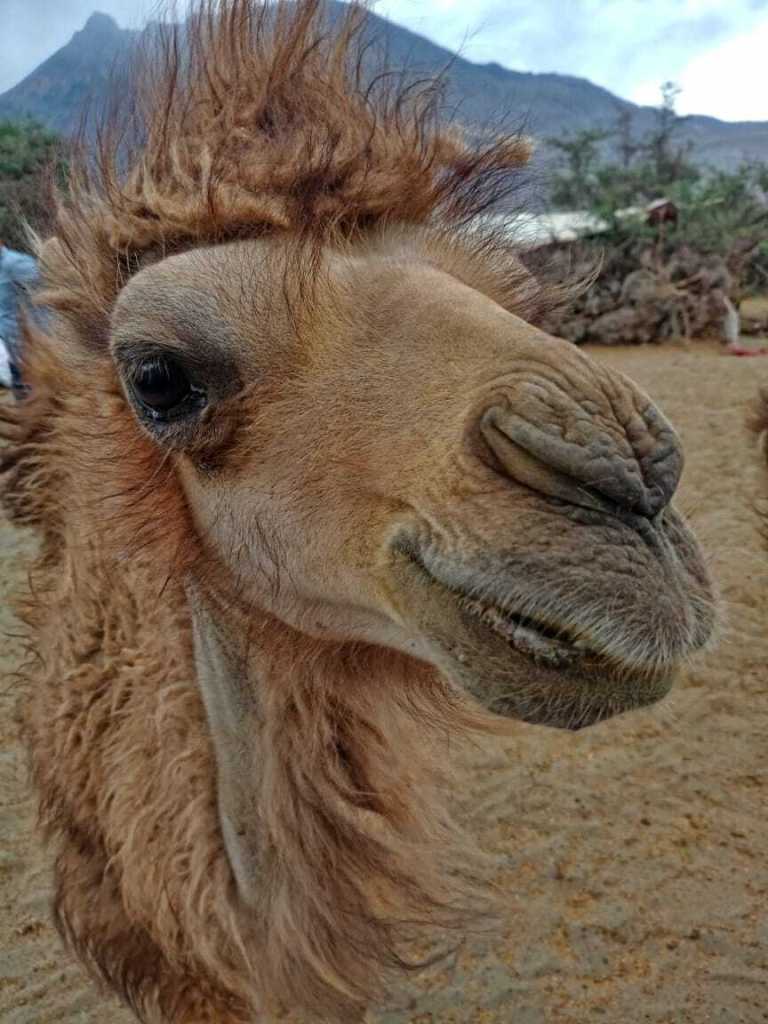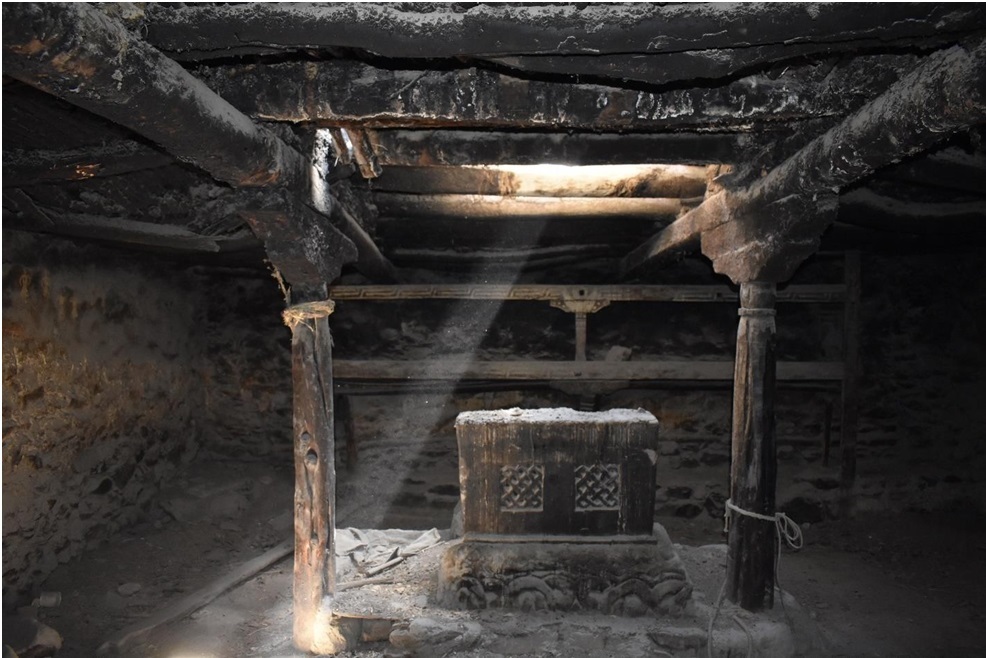Nestled amidst the breathtaking landscapes of the mighty Himalayas, the Nubra Valley is a hidden gem of Ladakh. With its surreal beauty, serene Landscape, and unique sand dunes and Monasteries —Nubra valley represents its beauty in so many colorful ways. It has always been my dream to know about this valley up-close even after visiting for so many years, and as a researcher, I got this opportunity to unfold the different locations of Nubra Valley and had been fortunate to witness tons of meaningful insights.
 Surreal beauty of Nubra valley
Surreal beauty of Nubra valley
 Mongolian Bactrian camel
Mongolian Bactrian camel
The Expedition was made in the month of September (September 18-21, 2023) along with my colleague Nilza Angmo in order to explore the traditional knowledge pertaining to Passive Solar Heated Buildings (PSHBs) and traditionary way of living in the region. Truly, it was an unforgettable experience which I will cherish for a lifetime. The Journey started on 18th September 2023 from Leh to Nubra valley, exploring different locations. The survey into this valley was not only informative and educational but inspirational in so many ways.
Turtuk and Bogdang Village: A Glimpse into Tradition.
On September 19, 2023, we embarked on our field survey, travelling to Turtuk and Bogdang Village. The rich flora and fauna, breathtaking landscape, and distinctive climate made the study more interesting.
It was emotional to contribute something to my own people through research, even at a place far from my birthplace.
As I stepped into Turtuk Village, the mesmerizing view took my breath away. The massive trees of apricot, walnut, and apple made me feel like I was in heaven, and the kindness of the people was a cherry on the top. With a great sense of gratitude, I explored the corners of the village, interacting with different people, and learning about the structures of the old buildings. Even after many visits, this field survey unveiled many things about the community. The survival of the local people in the harsh cold winters is an inspiration for man
During interviews with the local people, we (along with my fellow researcher) noticed that several buildings in Turtuk village are more than 200 years old, with wall thickness ranging from 10 to 60 cm. Localites built their houses with local stones because "peysaa" (Fine Sand) is abundant in Turtuk village, making it suitable for plastering the wall.
They
kept room ceilings deliberately low for warmth and had small windows for ventilation &
reduce heat loss. Locally Available Wood, such as "Khishing" Talu, Dungma (Popular Tree),
Brutse (Tanacetum Gracine) and Chipkang (Stipa- Orientalis) were used for roofs, while the foundation was made with Local Mud covered with "Shing-shen" (wood flooring) to retain warmth. Mixing apricot water with soil made the clay stronger. Intricate designs carved from "Khishing" wood adorned walls and roofs, known as "Shak," with apricot water and Peysaa mixed plaster.
Buildings were used to be round previously, with the central room serving as a kitchen, and cattle kept around to share warmth. Earthquake protection was considered, with woods used for flexibility. "Thap” (Traditional Stove/Fireplace) were used for additional heating and cooking, using cow dung and wood. The cost-friendly buildings used materials readily available in the village. Due to its remote geography and limited road connectivity, people often construct their houses by themselves and domesticated donkeys have generally been used for material transportation purposes.
Hunder and Diskit Village: Contrasts in Tradition
The next day (i.e. September 20th, 2023), we packed our bags and headed towards Hunder and Diskit villages. These two villages differed significantly from Turtuk and Bogdang in terms of climate, architecture, religion and culture. Most of the buildings in Hunder were aged above 100 years, some even more than 400 years. The upper floors were made of mud bricks, while the ground floors used stone. The thickness of walls and ceilings ensured warmth and protection from snow and rain.
Zimskhang (Palace) 400 years old in Diskit Village
We noted that rich families in Hunder used "Argha" (small pebbles mixed with coral and turquoise) for flooring, enhancing it with mustard or apricot oil for shine. Some even added glass ventilations above the Thap (Bhukari) for warmth and ventilation. Remarkably, the 400-year-old "Zimskhang'' palace still stood strong even after a huge flash flood struck, thanks to seismic-proof construction with woods placed between stones for stability.
 Thap ( Traditional Bukhari)
Thap ( Traditional Bukhari)
During the survey, it became evident that Nubra villagers are transitioning from traditional to modern building practices mainly driven by socio-economic forces. Those who retained traditional houses found them cost-effective and thermally efficient. The concept of Passive Solar Heated Buildings (PSHBs) was virtually unknown in Nubra villages.
The Enlightening Adventure
After completing the survey in Nubra Valley, we travelled back to Leh and stopped at “Khardong” village, where we found most villagers had PSHBs sponsored by GERES (Group for Renewable Energy and Environment) in collaboration with LEDeG- (Ladakh Ecological Development Group). This experience was an enlightening adventure, bringing me closer to Nubra Valley than
ever before. Interacting with so many people made me realise that wealth doesn't define happiness, but staying close to your motherland surely does.
For this research expedition, I am highly honored and grateful to my institution for providing us with such a wonderful opportunity. We gained insightful experiences and honed our research skills during this remarkable journey. I also would like to extend my gratitude to my Teammates, namely Mr.Sachin Uniyal, Mr. Tsewang Norphail, Mr. Salim Ahmed and Ms. Nilza Angmo.
